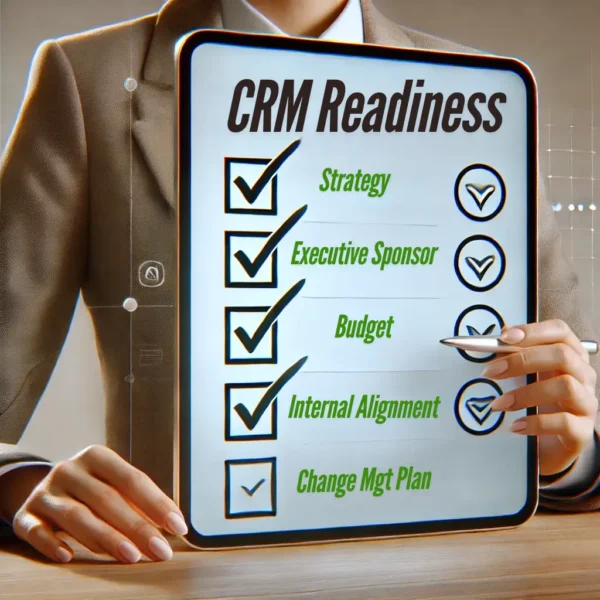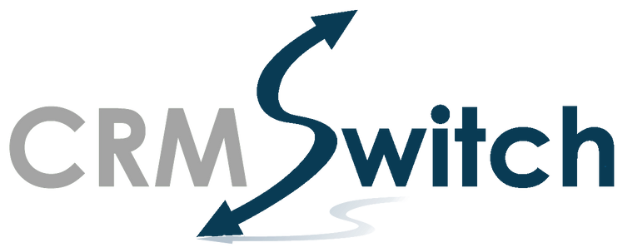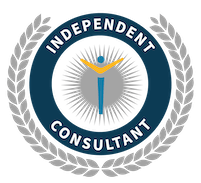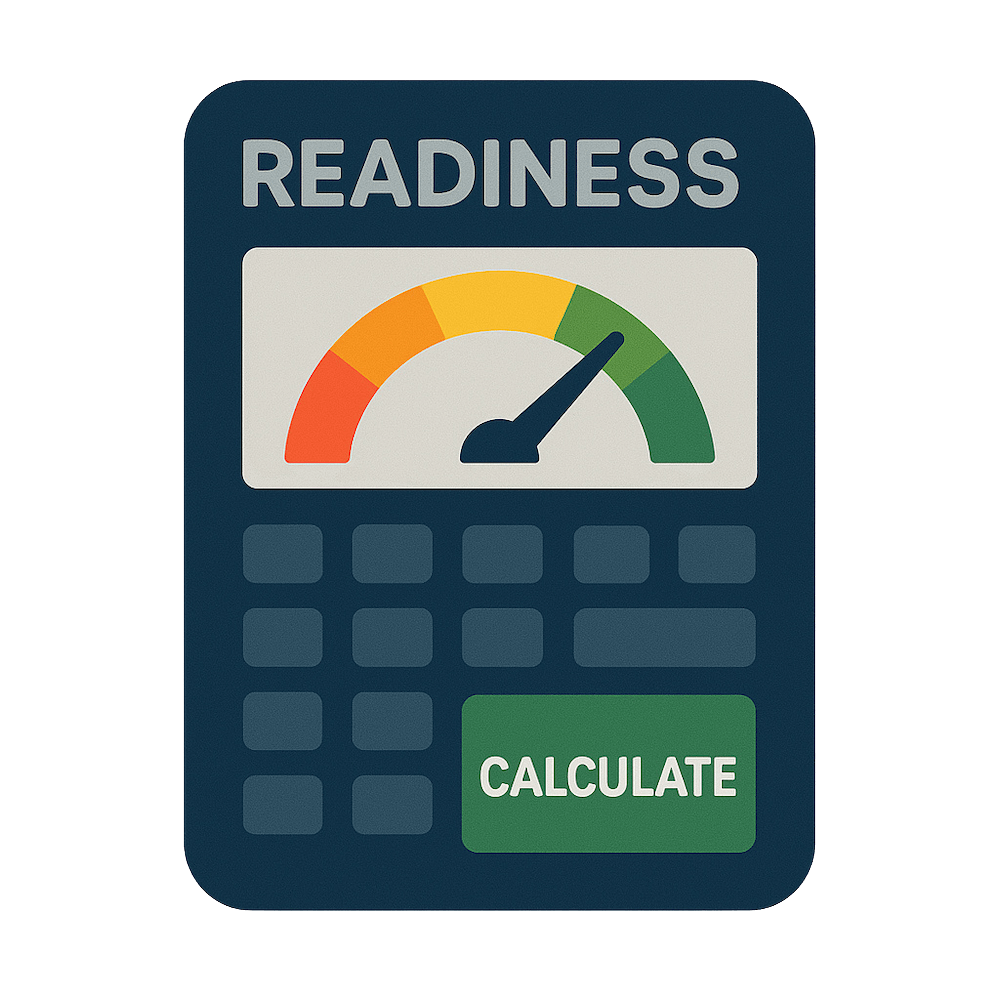Many businesses rush into CRM implementation thinking they’re prepared—only to face delays, poor adoption, and budget overruns. Are you responsible for ensuring systems align with business needs, integrate smoothly, and gain adoption? If so, beware – without proper CRM readiness, your project could be at risk before it even starts.

Why CRM Readiness Matters
Lack of preparation is a top reason CRM projects fail. Studies show that:
- 33% of CRM projects struggle with adoption due to poor planning (Capterra, 2023).
- 50% of CRM failures stem from integration issues (Nucleus Research, 2023).
- 60% of projects experience delays due to poor data migration (Forrester, 2023).
Common CRM Readiness Pitfalls
1. Overconfidence in Readiness
Many organizations believe they are ready for a CRM but overlook critical elements like CRM strategy and change management.
2. Lack of Executive Support
Without strong leadership backing, CRM projects can struggle to gain traction and may struggle to overcome organizational resistance.
3. Insufficient User Involvement
Failing to involve end-users in the planning process can lead to a CRM that doesn’t meet their needs.
CRM Readiness Checklist: 7 Must-Haves
👉 A clear vision sets the foundation. Companies must first define why they need a CRM and what they expect it to achieve—whether it’s driving increased revenue, improved visibility into sales activities, or streamlining service operations. Without this clarity, decision-making in terms of the best-fit software and implementation priorities becomes reactive instead of strategic.
🌱 A CRM strategy is just as critical. Before investing in software, businesses must determine who will use the system, how it will be integrated, and what success looks like. Identifying business challenges early ensures the best-fi CRM is selected and configured to meet actual needs, not just assumed ones.
📣 Executive sponsorship can make or break a CRM project. Leadership support ensures the initiative has funding, visibility, and required advocacy. Let’s face it: CRM software introduces new processes and responsibilities. The executive sponsor is required to champion the change and help evangelize the expected benefits. Without such sponsorship, CRM adoption becomes a low-priority task rather than a core business strategy.
💲 A realistic budget goes beyond licensing fees. Implementation, integrations, data migration, and user training all contribute to total costs. And don’t forget to factor in any internal resources that may need to be allocated for the day-to-day administration and support. Many businesses underestimate these factors, leading to unwelcome surprises when presenting the business case to management for approval.
🧭 User-driven requirements must be gathered early. This means interviewing the staff who will be using the CRM every day to do their job (not just the managers). Too often, IT teams deploy a CRM without fully understanding the needs of sales, marketing, and customer service teams. Engaging end-users from the start to collectively build out a CRM Blueprint is a step not to be skipped. This also helps to cultivate a pride of authorship in the CRM throughout the organization.
🎯 Internal alignment keeps the project focused. At CRM Switch, we encourage our clients to hold a CRM Workshop after gathering the business requirements. We sometimes jokingly frame it as a cage match in which none of the attendees get to leave the meeting until the CRM Blueprint is ratified by all. It is so important to ratify the CRM blueprint because it pays dividends during the implementation. First, it establishes scope for the stand-up and, secondly, helps reduce the chances of “going off the reservation” once implementation starts, and the business users get excited and want to try to add every possible feature at once
🔃 Change management ensures long-term success. Organizations must invest in proper training, clear communication, and ongoing support to drive engagement. That said, a CRM is only effective if employees use it consistently—and they’ll only use it if they want to. Identify the most change-averse employees early. Focus on WIFM (What’s In It for Me) when deciding what to include in the launch. By delivering value from day one to your champions and skeptics, you’ll win them over and build momentum for adoption across the company.
Think You’re Ready? Test Yourself
Many businesses assume they’re ready for a CRM but overlook preparing in key areas. The best way to avoid setbacks is to assess readiness before making a commitment.
Try the CRM Readiness Calculator to see where your organization stands. Identifying gaps now can save months of frustration and ensure your CRM delivers real value.


